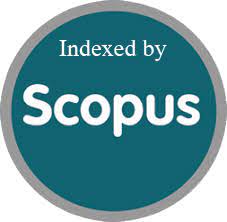The future of precision medicine in personalized cancer treatment
DOI:
https://doi.org/10.52783/jns.v14.1551Keywords:
Precision medicine, personalized cancer treatment, genomic sequencing, targeted therapies, artificial intelligence (ai), biomarkers.Abstract
The field of cancer treatment has witnessed significant advancements with the emergence of precision medicine, which tailors treatment based on individual genetic, environmental, and lifestyle factors. This research explores the future of precision medicine in the context of personalized cancer treatment, focusing on the application of advanced technologies such as genomic sequencing, biomarker discovery, and targeted therapies. The integration of artificial intelligence (AI) and machine learning (ML) in precision oncology is revolutionizing the way we diagnose, predict, and treat cancer. By identifying specific genetic mutations and molecular characteristics unique to each patient, personalized cancer treatments can improve efficacy, reduce side effects, and increase survival rates. This paper delves into the challenges and potential of precision medicine in oncology, highlighting future directions and the role of interdisciplinary collaboration in advancing personalized cancer treatment.
Downloads
Metrics
References
Mardis ER. Next-generation DNA sequencing methods. Annu. Rev. Genomics Hum. Genet.. 2008 Sep 22;9(1):387-402. https://doi.org/10.1146/annurev.genom.9.081307.164359
Vogelstein B, Papadopoulos N, Velculescu VE, Zhou S, Diaz Jr LA, Kinzler KW. Cancer genome landscapes. science. 2013 Mar 29;339(6127):1546-58. https://doi.org/10.1126/science.1235122
Diaz Jr LA, Williams RT, Wu J, Kinde I, Hecht JR, Berlin J, Allen B, Bozic I, Reiter JG, Nowak MA, Kinzler KW. The molecular evolution of acquired resistance to targeted EGFR blockade in colorectal cancers. Nature. 2012 Jun 28;486(7404):537-40. https://doi.org/10.1038/nature11219
Esteva A, Kuprel B, Novoa RA, Ko J, Swetter SM, Blau HM, Thrun S. Dermatologist-level classification of skin cancer with deep neural networks. nature. 2017 Feb;542(7639):115-8. https://doi.org/10.1038/nature21056
Cortes JE, Santoro A. Artificial intelligence in oncology: Current and future applications. Cancer Journal. 2019;25(3):183-191.
Collins FS, Varmus H. A new initiative on precision medicine. New England journal of medicine. 2015 Feb 26;372(9):793-5.
Kavitha M. Environmental monitoring using IoT-based wireless sensor networks: A case study. Journal of Wireless Sensor Networks and IoT. 2024;1(1):32-36.
Muralidharan J. Advancements in 5G technology: Challenges and opportunities in communication networks. Progress in Electronics and Communication Engineering. 2024;1(1):1-6.
los Ríos-Escalante D, Contreras A, Jara P, Lara G, Latsague M, Rudolph E. A review knowledge of Chilean crayfishes (Decapoda: Parastacidae). International Journal of Aquatic Research and Environmental Studies. 2023 Nov 10;3(2):109-15. https://doi.org/10.70102/IJARES/V3I2/7
Rajput A, Kumawat R, Sharma J, Srinivasulu A. Design of Novel High Speed Energy Efficient Robust 4: 2 Compressor. Journal of VLSI Circuits and Systems. 2024 Aug 27;6(2):53-64. https://orcid.org/0000-0003-2482-3637
Muralidharan J. Innovative materials for sustainable construction: A review of current research. Innovative Reviews in Engineering and Science. 2024;1(1):16-20.
Inayathullah N, Srilaxmi K, Vijayanand P. Comparitive study on culture economics of Litopenaus vannamei between summer and winter seasons along Tamilnadu coastal areas. International Journal of Aquatic Research and Environmental Studies. 2022 May 10;2(1):43-53. https://doi.org/10.70102/IJARES/V2I1/5
Kabasa B, Chikuni E, Bates MP, Zengeni TG. Data Conversion: Realization of Code converter using Shift Register Modules. Journal of VLSI circuits and systems. 2023;5(01):8-19.
Bita S, Balouch A, Mohammadian T. Determination of lethal concentration (LC50) of silver nanoparticles produced by biological and chemical methods in Asian seabass fish. International Journal of Aquatic Research and Environmental Studies. 2021 Nov 10;1(2):7-12. https://doi.org/10.70102/IJARES/V1I2/2
Abbas MA, Hatem TM, Tolba MA, Atia M. Physical Design of Speed Improvised Factor in FPGA Applications. Journal of VLSI circuits and systems. 2023;5(01):61-6. https://doi.org/10.31838/jvcs/05.01.09
Downloads
Published
How to Cite
Issue
Section
License

This work is licensed under a Creative Commons Attribution 4.0 International License.
You are free to:
- Share — copy and redistribute the material in any medium or format
- Adapt — remix, transform, and build upon the material for any purpose, even commercially.
Terms:
- Attribution — You must give appropriate credit, provide a link to the license, and indicate if changes were made. You may do so in any reasonable manner, but not in any way that suggests the licensor endorses you or your use.
- No additional restrictions — You may not apply legal terms or technological measures that legally restrict others from doing anything the license permits.










